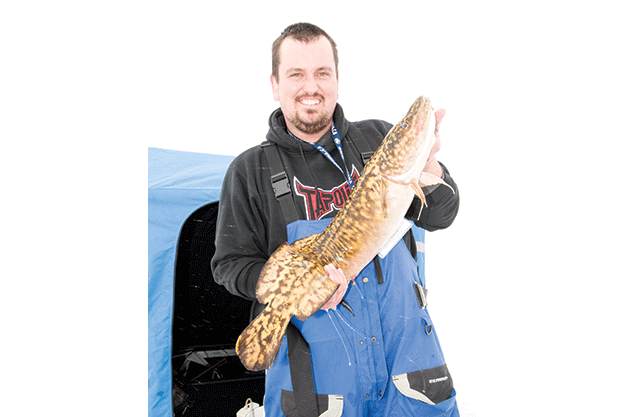Advertisement
During a typical winter, hardwater angler Calvin Perry says he’s on the ice almost every other day. And considering the 30-year-old has been fishing since age five, it’s not surprising that he and fishing buddy Ken Prentice won last year’s Canadian Ice Fishing Championship on Lake Simcoe, Ontario. Most impressive was how they also obliterated the competition on the two-day tourney’s big-fish day, when points are awarded for bowfin, burbot, lake trout, pike, walleye and whitefish. Though it was a two-man team, Perry was the angler who caught all four of the big fish—two whitefish and two burbot—that secured them the overall top prize. Here’s how he did it.
Research: Even though Perry is very familiar with Lake Simcoe, having fished there many times, he still checks for fishy-looking spots on a contour map before heading out onto the ice. “Look for an edge,” he says. On the day of the tournament, for example, he picked a spot in about 60 feet of water straight out from a point.
Advertisement
Bait: For catching both whitefish and burbot, Perry uses a 2 1/2-inch Williams Ice Jig Chartreuse. He says he likes the spoon because it provides plenty of flash and makes a lot of noise when it hits the bottom. Notably, he does not tip the jig with anything.
Gear: Eschewing high-tech ice rods and reels, Perry prefers his homemade jigging stick. He likes its weight and length, and finds that he gets a better hookset with it. He also likes pulling the fish in hand over hand, and thinks he has a more direct connection with the fish. “You can feel when it’s about to go on a run,” he says. And Perry never uses a tip-up—not because they’re ineffective, but because he finds them boring. “It makes me fall asleep.”
Technique: “I just bounce my lure off the bottom, pull it up, play it, then drop it down again,” Perry says. “You can hear a sound when it hits the bottom. The fish hear it, too.” By turning up the gain on his flasher, he can easily see his lure dropping down. And when he marks a fish and jigs the lure, he’s quickly able to tell if the fish is following it by watching the differently coloured bars on his screen. Perry says he jigs the lure “nice and slow” until he sees a fish take interest. He then speeds up the retrieve or slows it down even more, depending on what the fish want.
Advertisement

